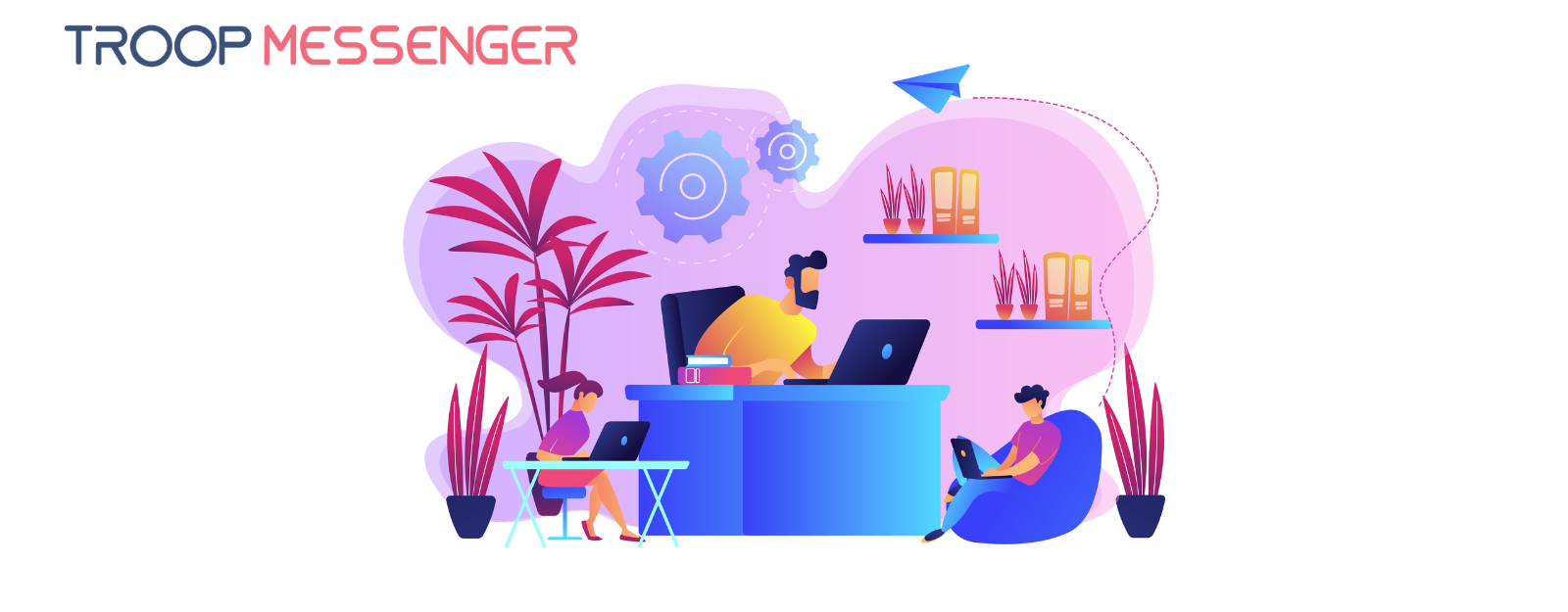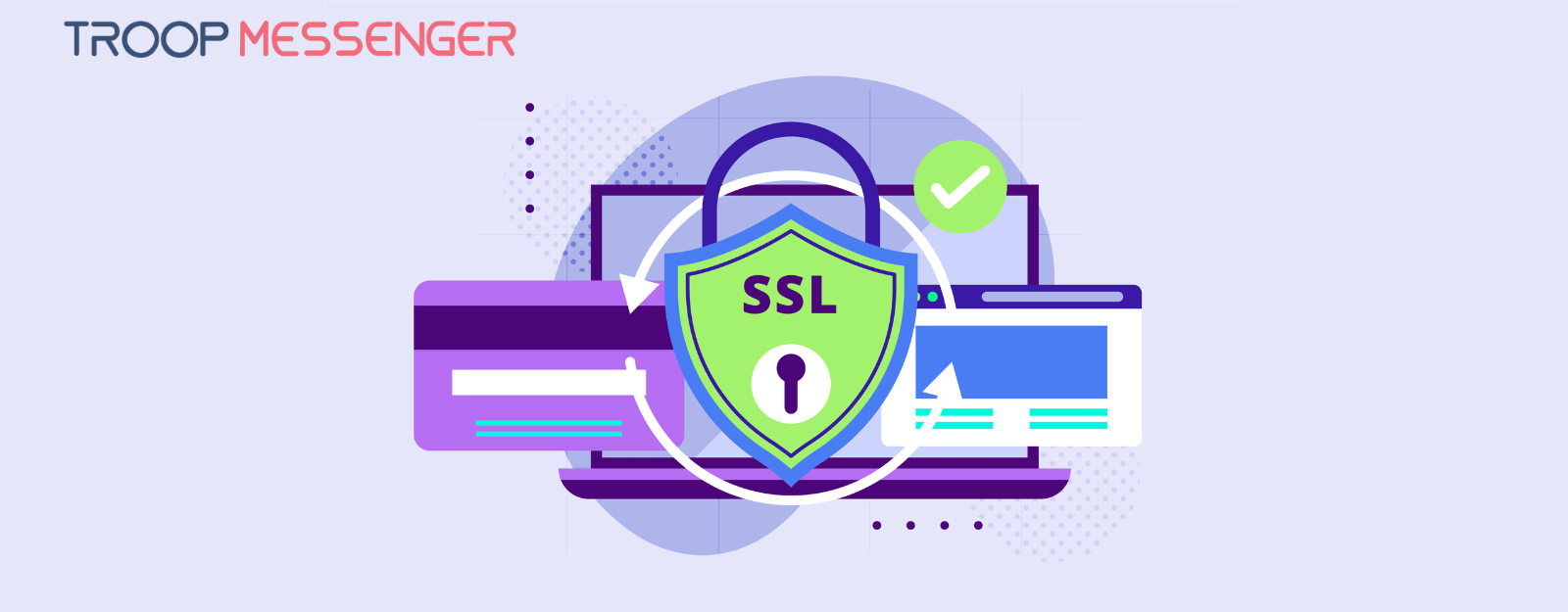Connect with us

On-Premise vs SaaS: Security Considerations for Enterprise Solutions
Even though the globe has been termed the "digital world," many businesses cannot distinguish between on-premise vs SaaS. The security factors may be complex, but understanding the differences can make matching them to your company's needs more accessible.
To take advantage of security advantages, businesses quickly switch from SaaS solutions to on-premise software or vice versa. Enterprises must examine the advantages and disadvantages of both solutions before choosing, with security issues being of utmost importance. However, if the organizations know the difference between SaaS and On-Premise, they can make an educated choice, as mentioned above.
Let's start organically before delving into the dispute between on-prem vs SaaS.
Table of Contents
What is On-premise?
"On-premise," or "self-hosted," refers to private data centers that businesses own and operate. Private clouds, in which computing resources are virtualized similarly to public clouds, can be run on on-premise infrastructure.
The company should get a permit or duplicate of the product to use on-premise applications or software, given that the complete infrastructure is located on the grounds of an organization and the software is licensed. These are alternatives to cloud-based solutions accessed via a browser, mobile app, or custom interface. They are hosted remotely over the internet.
Thanks to the on-premise implementation, your enterprise company can install resources and applications internally. On-premise infrastructure upkeep is the responsibility of an organization's IT department. The administrator or head of the business will manage the linked process. As a result, the company has control over the server's configuration, data protection, and hardware.
On-premises systems have significant startup and operating expenses but low ongoing maintenance costs. Businesses also require IT infrastructure to build a new environment and offer assistance.
The cost of system downtime lost productivity due to system outages, the expense of keeping the servers powered round-the-clock, and other factors can also impact on-premise pricing.
What is SaaS?
Software as a Service, or SaaS, is an approach to licensing and delivering software that involves centrally hosted software licensed on a subscription basis through monthly, quarterly, half-yearly, and yearly plans. SaaS is another term for web-based, on-demand, or web-hosted software.
SaaS is seen as a part of cloud computing services, along with Platform as a Service (PaaS), Infrastructure as a Service (IaaS), and other services.
SaaS programs, which have become a standard delivery paradigm for many corporate applications such as accounting, project management, customer relationship management, messaging software, etc., are often accessed using web browsers. Most enterprise software companies use SaaS platforms as part of their strategic approach.
SaaS price plans are based on how many customers use the cloud solution. While some vendors offer lower SaaS fees for several concurrent users, most SaaS applications charge per user, while some charge for teams of five users.
The number of functionality your company needs, the number of connections you maintain in your database, and the number of projects the program can manage can all affect the price of SaaS. SaaS pricing models will differ from vendor to vendor, sometimes even with industry-specific peculiarities.
Security Considerations for Enterprise Solutions
You should read the following information to make an informed decision about SaaS and on-premise applications.
On-Premise Solutions
On-premise solutions, as previously stated, are installed on servers within an organization's physical premises and offer complete control over security protocols. Unlike SaaS solutions, security risks arise when unauthorized users transfer or gain server access control. As a result, businesses must ensure that access controls, data encryption, firewalls, and anti-virus software can protect the servers. Regular software updates, backups, and disaster recovery plans are additionally fundamental for moderating the dangers of data loss, cyber-attacks, system failure, etc.
On an explicit note, on-premise may initially appear expensive due to significant upfront hardware and software investments. However, compared to SaaS solutions, it costs you less in the long run. Hardware, software licensing, and maintenance costs must be taken into consideration by businesses. Ongoing maintenance, updates, and cybersecurity staff are required to manage the infrastructure's security.
SaaS Solutions
Third-party service providers host and maintain SaaS solutions. Businesses benefit from their scalability and adaptability. However, it is essential to check that the SaaS provider adheres to industry standards, such as SOC 2, HIPAA, or GDPR, depending on the requirements of the business.
Nevertheless, a security breach or cyberattack can compromise the enterprise's data. So, enterprises must ensure that their SaaS provider uses adequate security measures like cyber and physical access control, encryption, data backup, disaster recovery, and multi-factor authentication. In addition, businesses must be aware of the provider's data ownership and retention policies and comply with regulatory requirements; otherwise, you will be compelled to abide by your SaaS provider's mediocre security protocols.
SaaS security principles contrast with on-premise security since the dangers of information breaks are higher with SaaS arrangements, as the information is put away on outsider servers. Hence, it is proved how capacitated is on-premise. Subsequently, on-premise arises as the undisputed victor in the debate between on-premise vs SaaS.
Pros and Cons of On-Premise and SaaS
Consider some pros and cons alongside comparing your company's needs before choosing an on-premises or cloud model.
On-premise
Pros
- You don’t need the internet to access the data.
- You will be fully responsible for your data. So, you will be at liberty to employ world-class security protocols than a service provider. You may be more aware of the security firewalls or other precautions you deploy.
- On-premises software grants the right to customize, alter, and configure particular data within the software to suit the company's needs because you govern the license and property rights to it.
- With on-premise infrastructure, you only need to pay once for your client licenses. It is, therefore, less expensive than cloud-based solutions.
Cons
- The initial investment is more compared to SaaS.
- Software installation in the server may require more time.
- Small companies may need help finding it pocket friendly.
- Installing updates, backing up, and keeping the apps current are all responsibilities of your IT team.
SaaS
Pros
- SaaS is rapid compared to on-premise because of the pre-provisioning of standard equipment and programming.
- Your service provider manages Data Storage, maintenance, support, etc.; you don't need to appoint an IT staff.
- SaaS subscription plans are budget-friendly.
- Your employees can access the tool using any computer, smartphone, or tablet.
Cons
- Your SaaS platform’s functionality depends on the internet connection you are using, making it difficult to access your information when the internet is slow. So, you must utilize an uninterrupted, high-speed internet connection. Unlike on-premises, you couldn't access the data if the internet went down.
- SaaS subscription charges may be more costly over a long time frame.
- You must check their security procedures because there is a chance that they could be accessed by unauthorized personnel.
- Compared to on-premise, you are not empowered with data ownership, maintenance, upgrades, etc.
- Your business and service provider may be in different places or countries.
- Without your consent, the SaaS provider is obligated to provide law enforcement officers with your data.
What is an example of on-premise and SaaS software?
Troop Messenger is the perfect example of both on-premise and SaaS software, which prioritizes offering a safe and secure platform. It supports on-premise solutions but can deliver other models such as SaaS, chat APIs & and SDKs, and customization, giving clients multiple options.
Troop Messenger is considered one of the best on-premise chat servers. It is a one-stop solution for modern-day office communication that complies with every requirement. For instance, you don’t have to scatter among the multiple tools consuming your productive time since it offers chat, audio/ video calls, conference, screen sharing, remote access, live location tracking, and other features. In addition, this self-hosted chat software also offers Zapier integration. Hence, you can integrate the software you are currently using.
Before reading the above information, you may have expected to learn about two different tools. Yet, since I can give the best example for on-premise and SaaS software with one software, I recommended the best team chat app that prompted defense agencies to employ as their defense messaging system; I believe the defense validation says all to demonstrate its prowess.
So, here is a solution that supports the above-mentioned delivery models while overlooking the debate between on-premise vs SaaS, complying with enterprise requirements.
Conclusion
There may be no harm in depending on a SaaS service provider, but depending on their mediocre security protocols is undoubtedly harmful.
On-premise gives a sense of confidence and peace of mind. They say that to achieve anything, you must have confidence; on-premise is the model that strengthens your confidence enabling you to make effective decision-making.
The information provided clears up any confusion about selecting an effective approach, allowing you to stop comparing on-premise vs SaaS solutions.








